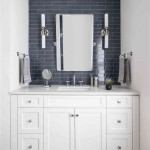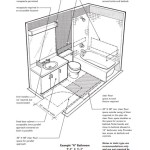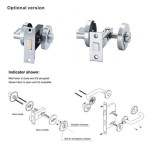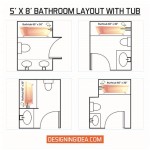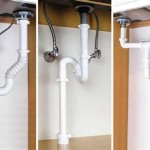Briggs Bathroom Sinks: A Comprehensive Guide
Briggs is a recognized name in bathroom fixtures, and their bathroom sinks are a popular choice for homeowners and contractors alike. This article aims to provide a comprehensive overview of Briggs bathroom sinks, covering their various types, materials, styles, installation considerations, and maintenance tips. The information presented here will aid in making informed decisions when selecting a Briggs sink for bathroom renovation or new construction projects.
Types of Briggs Bathroom Sinks
Briggs offers a diverse range of bathroom sink types to cater to different aesthetic preferences, spatial constraints, and functional needs. Understanding these types is crucial for selecting the most suitable sink for a particular bathroom environment.
Undermount Sinks: These sinks are installed beneath the countertop, creating a seamless and elegant look. The rim of the sink is mounted to the underside of the countertop, leaving a smooth, uninterrupted surface. This design makes cleaning easier as there are no exposed edges to trap dirt or debris. Undermount sinks are particularly well-suited for bathrooms with solid surface countertops such as granite, quartz, or marble.
Briggs undermount sinks are available in various shapes, including rectangular, oval, and round. The choice depends on the desired aesthetic and the overall bathroom design. They generally require professional installation to ensure a secure and watertight seal between the sink and the countertop.
Vessel Sinks: Also known as above-counter sinks, vessel sinks are designed to sit on top of the bathroom countertop. They function as a decorative element in addition to serving their functional purpose. Briggs vessel sinks are offered in various materials, shapes, and sizes, offering a wide array of design options. They can be made of porcelain, glass, stone, or metal, each contributing a unique look and feel to the bathroom.
Installation for vessel sinks is relatively straightforward, often requiring only basic plumbing skills. However, careful consideration must be given to the height of the countertop and the sink to ensure comfortable use. Taller faucets are often required to accommodate the height of vessel sinks.
Pedestal Sinks: Pedestal sinks consist of a basin supported by a freestanding pedestal base. They are a classic choice for bathrooms, offering a clean and traditional look. Briggs pedestal sinks are ideal for smaller bathrooms where space is limited, as they take up minimal floor space.
While pedestal sinks provide ample basin space, they lack built-in storage. Therefore, additional storage solutions, such as cabinets or shelves, may be needed to store toiletries and other bathroom essentials. Installation is generally simple, involving securing the pedestal to the floor and connecting the plumbing.
Wall-Mounted Sinks: Wall-mounted sinks, as the name suggests, are attached directly to the bathroom wall, leaving the floor space beneath the sink open. This creates a sense of spaciousness and makes cleaning easier. Briggs wall-mounted sinks are available in various styles, from sleek and modern to more traditional designs.
Proper installation of wall-mounted sinks is essential to ensure stability and prevent damage to the wall. It is crucial to ensure that the wall can adequately support the weight of the sink, especially when it is full of water. Reinforcement may be required, particularly if the wall is not structurally sound.
Console Sinks: Console sinks are a hybrid of pedestal and wall-mounted sinks. They feature a basin supported by legs, providing both a visual appeal and some degree of storage space underneath. Briggs console sinks often have a shelf or two beneath the basin, which can be used to store towels or other bathroom items.
Console sinks offer a good balance between aesthetics and functionality. They are a popular choice for bathrooms where some storage is desired but a full vanity is not necessary. Installation involves attaching the sink to the wall and securing the legs to the floor.
Materials Used in Briggs Bathroom Sinks
The material of a bathroom sink significantly impacts its durability, aesthetics, and maintenance requirements. Briggs utilizes various materials in the manufacturing of its bathroom sinks, each offering distinct advantages.
Vitreous China: Vitreous china is a popular material for bathroom sinks due to its durability, resistance to staining, and ease of cleaning. It is a type of ceramic that is fired at high temperatures, resulting in a non-porous surface. Briggs vitreous china sinks are available in a wide range of colors and styles, making them a versatile choice for any bathroom design.
Vitreous china is relatively resistant to scratches and chips, but it can be damaged by harsh chemicals or abrasive cleaners. Regular cleaning with mild soap and water is typically sufficient to maintain its appearance. The non-porous nature of vitreous china prevents the absorption of stains and odors, ensuring that the sink remains hygienic.
Porcelain: Porcelain is another type of ceramic material commonly used in bathroom sinks. It is similar to vitreous china but is generally more durable and less porous. Briggs porcelain sinks are known for their smooth, glossy finish and their ability to withstand daily use.
Porcelain is highly resistant to scratches, stains, and heat, making it a practical choice for busy bathrooms. It is also easy to clean and maintain, requiring only occasional wiping with a damp cloth. Porcelain sinks are available in a variety of colors and styles, offering a wide range of design options.
Cast Iron: Cast iron sinks are known for their exceptional durability and heat retention properties. Briggs cast iron sinks are coated with a layer of enamel, which provides a smooth, non-porous surface. This enamel coating is available in various colors, allowing for customization to match the bathroom decor.
Cast iron sinks are highly resistant to scratches, chips, and stains. However, they are also significantly heavier than sinks made of other materials, which can make installation more challenging. Proper support is essential to ensure that the sink is securely mounted.
Stainless Steel: Stainless steel sinks are a popular choice for modern bathrooms due to their sleek, contemporary appearance and their exceptional durability. Briggs stainless steel sinks are resistant to rust, corrosion, and staining, making them a practical choice for high-use bathrooms.
Stainless steel sinks are easy to clean and maintain, requiring only a quick wipe with a damp cloth. However, they can be susceptible to water spots and fingerprints, so regular cleaning may be necessary to maintain their appearance. Stainless steel sinks are typically available in a brushed or polished finish.
Glass: Glass sinks offer a unique and elegant look for bathrooms. Briggs glass sinks are typically made of tempered glass, which is highly durable and resistant to shattering. Glass sinks are available in a variety of colors, shapes, and textures, allowing for a wide range of design possibilities.
Glass sinks require careful handling and cleaning to prevent scratches and damage. It is important to use non-abrasive cleaners and soft cloths to avoid scratching the surface. Glass sinks can be particularly susceptible to water spots, so regular wiping may be necessary to maintain their clarity.
Installation and Maintenance of Briggs Bathroom Sinks
Proper installation and regular maintenance are crucial for ensuring the longevity and optimal performance of Briggs bathroom sinks. The installation process varies depending on the type of sink, while maintenance involves routine cleaning and care.
Installation Considerations: Before installing a Briggs bathroom sink, it is essential to consider several factors, including the type of sink, the available space, the existing plumbing, and the countertop material. For undermount sinks, professional installation is typically recommended to ensure a watertight seal between the sink and the countertop. For vessel sinks, attention should be given to the height of the countertop and the sink to ensure comfortable use. Wall-mounted sinks require proper support to prevent damage to the wall.
It is also important to ensure that the plumbing connections are compatible with the sink's drain and faucet openings. If necessary, adaptors or extensions may be required. Always follow the manufacturer's instructions carefully during installation to avoid damaging the sink or the plumbing.
Cleaning and Maintenance: Regular cleaning is essential for maintaining the appearance and hygiene of Briggs bathroom sinks. For most materials, mild soap and water are sufficient for routine cleaning. Abrasive cleaners should be avoided, as they can scratch or damage the surface of the sink. Stubborn stains can be removed with a paste of baking soda and water.
It is also important to regularly inspect the sink for leaks or cracks. If any leaks are detected, they should be repaired promptly to prevent water damage. The drain should be cleaned periodically to prevent clogs. A simple solution of baking soda and vinegar can be used to dissolve minor clogs. For more severe clogs, a plunger or drain snake may be necessary.
For glass sinks, it is important to use non-abrasive cleaners and soft cloths to avoid scratching the surface. Water spots can be removed with a glass cleaner. For stainless steel sinks, a stainless steel cleaner can be used to maintain their appearance and prevent rust. For cast iron sinks, it is important to avoid using harsh chemicals or abrasive cleaners, as they can damage the enamel coating.

Briggs White Enameled Steel Drop In Round Bathroom Sink 19 X At Com

Buy Briggs Homer Bathroom Sink

7603 Altima Three Hole Bidet Briggs Plumbing Bidets

Briggs Anderson Oval Drop In Bathroom Sink White Hemlock Hardware

Briggs Anderson Bathroom Sink Com

Briggs 19 In Round Steel Drop Wht At Com

Briggs Anderson Oval Drop In Bathroom Sink White Hemlock Hardware

Vintag Briggs Sink
Sinks Bathroom Wall Mount Grand Island Lenexa Lincoln Omaha Sioux City

Etta Avenue Briggs 36 Single Bathroom Vanity Diy
Related Posts
